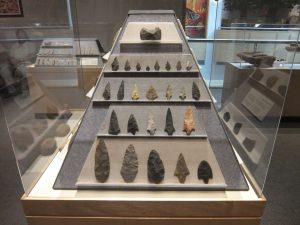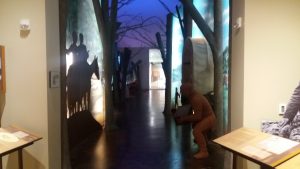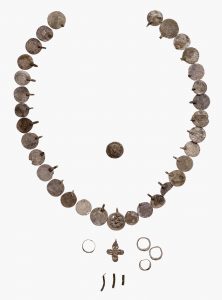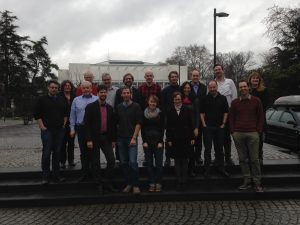In the last week of March I had the pleasure to visit the SuALT project on a research mobility programme. Born and (mostly) raised in Helsinki, though now having spent the larger part of my life abroad, the city has a special place in my heart and it is always a pleasure to go back there. Special thanks are owed to Anna Wessman, Suzie Thomas and the University of Helsinki for inviting me and for arranging all the details of the trip so brilliantly.
I am a medieval historian with a keen interest in digital humanities and archaeology, and in the recent years I have worked on a GIS-led research project with the Portable Antiquities Scheme based at the British Museum in London. As PAS, SuALT and other bourgeoning small finds recording schemes in Europe have demonstrated, there is a tremendous amount of potential in digital humanities analysis of metal-detected finds for reappraising our understanding of historical material cultures. With new data beginning to be made available to researchers and members of the public by the new continental schemes, there is also increasingly a demand for its foundational statistical and GIS analysis.
The purpose of my visit was to participate in the conversation on DH research on Finnish metal-detected finds. The week seemed to fly past extraordinarily fast. Suzie and Anna introduced me to the department and we discussed the current work conducted by SuALT. Ville Rohiola at the Finnish Heritage Agency gave me a very generous amount of his time for discussing the various cultural heritage databases and projects that the FHA supports. Professor Eero Hyvönen and his team invited me over to the Semantic Computing Group, Aalto University, and showed me their work on linked-data databases and on the prototype online portal for self-reporting finds. On Wednesday I gave a paper on my own research and experiences with the PAS, which sparked interesting conversations on how various archaeological databases that seemingly serve similar purposes nevertheless enable different research directions. As was noted, databases are themselves cultural artefacts, the character and capacities of which are shaped by design, development and data input priorities particular to their institutional environments.

Photo: Suzie Thomas
Having worked within a British metal-detectorist context it was interesting to see how the histories and cultures of the respective detectorist communities differ, and how this encourages different solutions in heritage management. Finnish metal-detectorists appear to be particularly ready to embrace new recording technologies!
Between meetings and informative conversations I had some time for examining a download of the luettelointitietokanta, which contains records of the metal-detected finds sent to the FHA and taken into their archaeological collection. While this dataset is only a portion of the material recovered over the last half a decade, it was nevertheless possible to start working out broad trends in the finds data. Like in the UK coins are the most numerous object type, followed by copper/copper-alloy dress accessories. On a very large scale the spatial distribution of finds might be interpreted as reflecting demographic patterns (e.g. the weight of the finds lies in the south) but are likely to correlate more directly with active regional detectorist communities (see map).

Map: Eljas Oksanen
A comparison with trends in the PAS data helps to tease out local biases. In relative terms iron objects are very rare in England and Wales (< 1 percent of all finds) but form a substantial minority population of the Finnish finds (16 percent). In the UK the vast majority of metal-detecting takes place on fields where a great deal of scrap iron may be encountered, and detectorists are even known to set their detectors to ignore iron signals. In Finland many finds are made in forests where scrap metal ‘background noise’ may not be such an issue. Perhaps there are therefore differences in detectorist habits that directly influence the composition of recorded material? Conversely there were few reported lead objects among this sample of Finnish finds – a real difference in material culture or another result of different recovery/recording biases? Many more questions remain to be asked.
The week was densely packed with activity and has given me a great deal of food for thought. SuALT is working to established an enhanced context for managing metal-detected finds that incorporates archaeological perspectives, IT solutions and cultural heritage management concerns. From my particular perspective as a digital humanities researcher it is clear that SuALT will empower new ways of examining and understanding the past.







